Lisbon Eco Travel Guide
In this sustainable travel guide to Lisbon, Portugal, I cover:
What can I tell you about Lisbon? The buildings are painted sorbet flavours, the tiny sidewalks fit half a person, and you can't walk a block without stumbling upon a grandiose church. I never did ride a tram, but parked cars frequently block their paths. Once I saw a pig casually strolling down the street beside a human I hoped was his owner. I had a dozen questions but didn't ask: a missed opportunity.
Almost every meal, I ate fish, and the rest of the time, egg tarts. Fittingly, I was greeted with fresh Manteigaria egg tarts by a thoughtful Airbnb host when I arrived in the dead of the night in Alfama, the oldest district in Lisbon. The tiny apartment had no view, but step outside and there was the National Patheon, formerly the Church of Santa Engracia, imposing and the colour of a cloud.

Where to Stay in Lisbon
I moved homes quite a bit during my short stay in Portugal. First, this little Airbnb I shared with Alden from EcoCult. After the rest of the group got into town, we moved to a bigger Airbnb for a bit. After exploring Lisbon, we took the train to central Portugal for our Nourish in Nature eco yoga retreat. When it was all over, we returned to Lisbon, where the Airbnb apartment of those who planned to stay longer (I was leaving in the evening) had been trashed by a bachelor party and still soggy with their hedonistic energy.
Bachelor and bachelorette parties are taking over Lisbon more than beautiful young French people in striped shirts. My friend from Paris happened to be in Lisbon the same weekend for a bachelorette party (she doesn't wear striped shirts), and I got to catch up with her. Francesca from Ethical Unicorn took a flight in from England and said she was the only one on the plane not part of a stag party. Lisbon has been a popular attraction in recent years due to affordability, close proximity to other European cities, and I'm sure the Instagram-ready architecture and cityscapes contributed to the tourism boom.


Unfortunately, "terramotourism"—tourism earthquake—is displacing locals from once-affordable homes, since short-term rentals generate more income. Admittedly, renting an Airbnb is usually the more affordable option for tourists, especially when travelling in a group. If you do go this route, book from a local and not one managed by a company. The ones I stayed in were away from the chaotic tourist areas, where I was able to mingle with the locals.
But what happens when the locals get pushed out? How can we prevent Lisbon from becoming another Venice? Locals still need affordable housing, and you also can't stop people from traveling, so it's up to the government to step in to protect the city. They can limit short-term rental licenses, or set maximum dates for residences renting out their homes per year, give local business tax incentives, limit selling property to investors, and so on. This applies to all cities navigating the best way to handle mass tourism.
For futures stays, I'm keeping these sustainable hotels in mind: Inspira Santa Marta Hotel, NEYA Hotel, and Lisbon Story Guesthouse, which looks adorable.
Eco-friendly ways to get around Lisbon
A convenient and eco-friendly way to get from the airport into town is via uberGREEN. It's basically Uber with electric/hybrid cars—look for the "Green" option on your app. They might have rolled out this program in other cities as well, but I haven't seen it in North America so far. I really like it, although if you're in a rush to get somewhere, the uberGREEN cars are not as abundant as the regular cars, so you might want to plan ahead.
Simply walking around the city is a joy, especially in Alfama, where Alden and I didn't mind getting lost in the cute cobblestoned alleys. The streets are hilly, and walking can get pretty tiring, so I was relieved to take the Eco Lisbon Tour which is basically renting a tiny electric car for the day.
I'd be too cautious to drive in the middle of a chaotic foreign city on my own, so thank you Alden for driving. The Twizy, our eco clown car, is so small and narrow, the passenger must sit behind the driver. I would groan my way to get in or out. We tried naming the car, but the only name that seemed appropriate was simply "Twizy." Let's just say we got a lot of stares on the streets driving around. I know we looked ridiculous(ly cute) in this thing, especially behind a big tour bus or something.
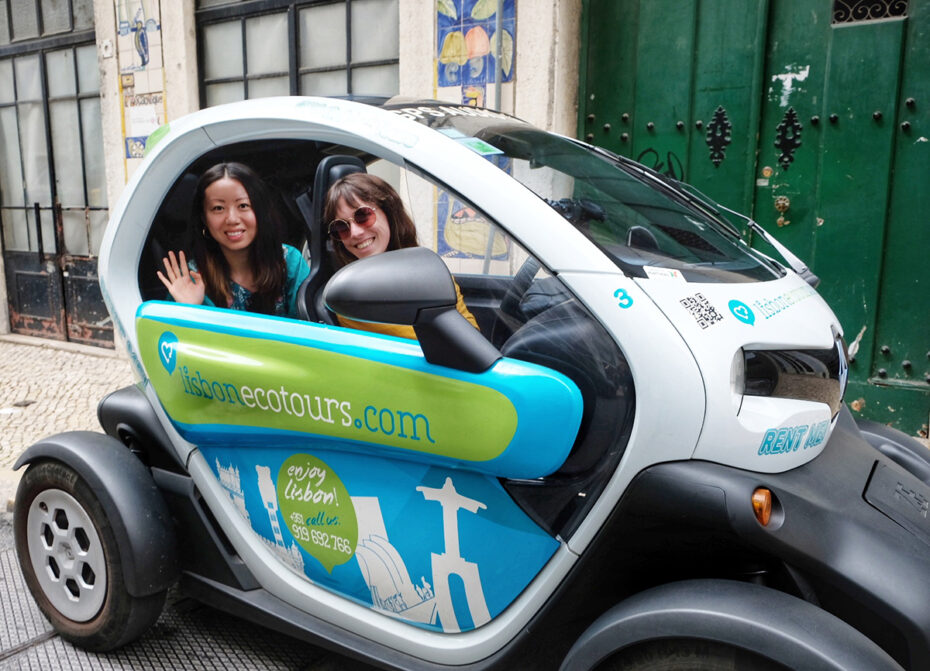
Because Twizy is the size of a toy, parking wasn't difficult to find. Just make sure you remember where you park it or drop a pin on your map app. Don't be us wandering around for a good half hour trying to find Ol' Twiz after visiting Lisbon Castle.
Lisbon Castle
The castle is also known as São Jorge Castle, and it stands above central Portugal. I wasn't personally wowed by the castle itself since it's basically ruins, some parts dating back 400 years and most restored from the 1920s, but the views of the city are spectacular, and it's fun to walk around, especially with a glass of wine in hand. Alden was keen on buying wine from the most adorable little truck called Wine with a View.
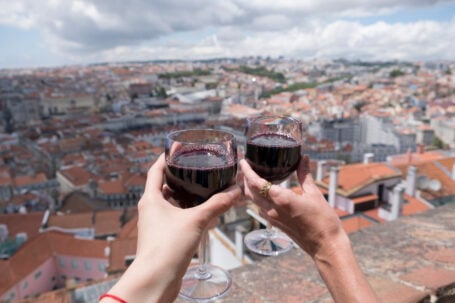

We spent so much time at the castle that we had to zip through the rest of the GPS-guided tour in the Twizy. The GPS is not the greatest because when we didn't follow the route exactly, often due to closed streets or construction blockages, it's hard to get back on course and know what you've missed. We suggested to the owner to develop an app for the phone.
Another thing about the eco car is that it will run out of battery if you use it for more than the scheduled time. We were late and the Twizy stopped working when we were mere blocks away from the drop off location. The owner was nice enough to meet us and take care of everything. Even with the annoying GPS and limited battery power, I'd gladly take a Twizy tour again—it's in other cities too. Maybe I'd even get behind the wheel this time.
Exploring Sustainable Lisbon
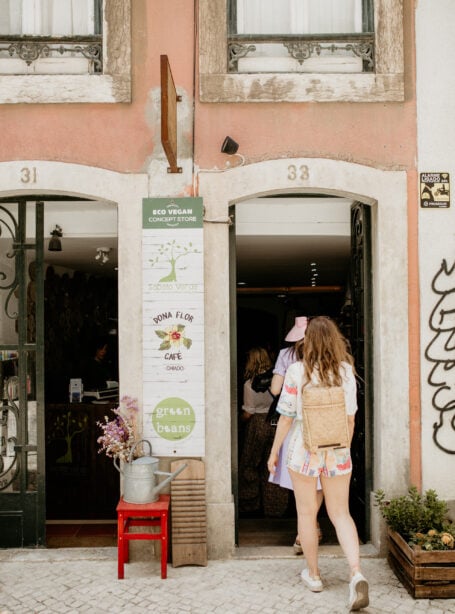
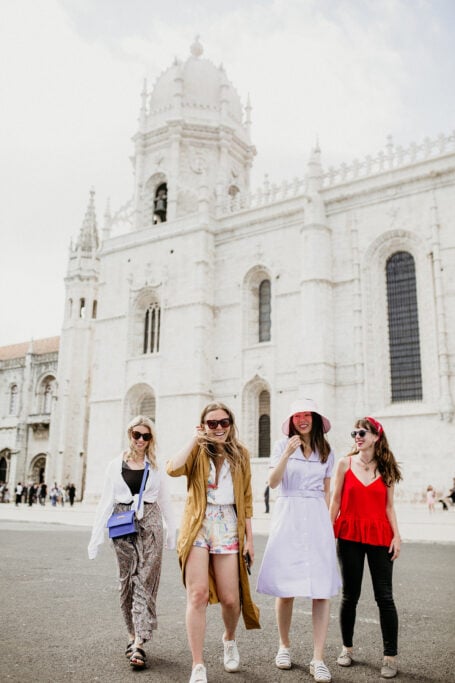
When Francesca, Holly from Leotie Lovely, and photographer Monique Pantel joined us, we looked at street art in Barrio Alto, dined in local restaurants, and shopped consciously.
One of the places we visited was Eco Vegan Concept, which sells zero waste goods, sustainable fashion and accessories. An eco-friendly cafe is in the back.
At Os Chapeleiros, I bought a hat. A pink roll-up visor made from paper to be exact, made by the family that runs it. It borderlines granny chic (or just granny), but it's also kind of Dior New Look, don't you think?
In front of the beautiful Jeronimos Monastery, we took an electric tuk tuk to LX Factory, a trendy hotspot. It's a strip of old factory buildings converted into cool restaurants, bars, cafes, specialty shops, and concept stores. Art is everywhere. LX Factory in the Alcantara neighbourhood, which is a little separate from the centre of the city but it's worth the trip.
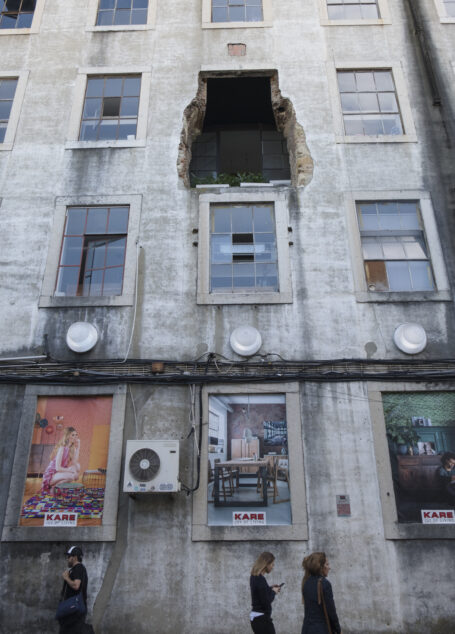

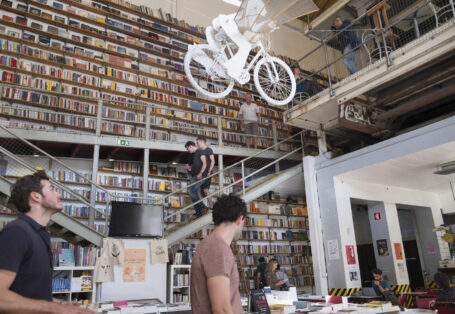

We went to the rooftop bar at Rio Maravilha, which had the most amazing view of the Tejo River and the 25 de Abril Bridge. The cocktails were pretty good too. The decor in the restaurant downstairs is interesting, even their washrooms, where a bathtub stood in for a communal sink, as I recall.
Local Food in Lisbon
As I mentioned, fish is big here. They can cook it in so many different ways. My first dish is still my favourite, grilled fish of the day from Miguel Laffan. I stumbled upon this restaurant at Time Out Market, a modern food hall hosting the best of Lisbon under one roof, where world-class meals are served on cafeteria trays.

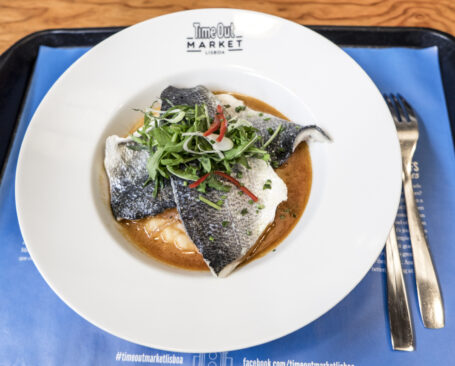
The worst fish dish I had was at a tourist trap Fado place. We were all hungry one night and didn't check reviews before we went in. Everyone unanimously agreed the food was awful. Don't be like us. Good food is everywhere in Lisbon; check Yelp.
As for non-fish options, the nice French people from the online ethical fashion store Klow, who are based in Portugal, hosted us for a lovely dinner one night at Ao 26. I can always appreciate vegan food done well. This place tends to get packed, so I recommend making a reservation.
Another local favourite is Fauna & Flora, the ultimate "healthy" brunch spot in Lisbon. The place is so sickeningly Instagram-ready that I rebelled and took no photos. But it is delicious and worth the wait as they take no reservations.

And of course, you have to try an authentic Portuguese egg tart—pateis de nata—while you're here. I've tried Manteigaria, a local fave, a couple of times. If you want to get really authentic, head west to Pasteis de Belem, where the original recipe dates back to 1837. Don't be intimidated by the long lineup outside. It's for take-out. I got a hot tip from the Twizy owner that the line to eat-in is much shorter.
On my last day in Lisbon, Florine from The Wasted Blog, Alden and I ate really yummy vegetarian crepes at Sawa Sawa, which is a juice bar too. This place is tiny, so take your food down to the harbour, which is only steps away.
And one last place I'll recommend is Park Bar, a secret rooftop hotspot in Bairro Alto. They don't list their address, but it's on Yelp, sort of. When you get there, you'll just find a parking garage. There's no sign, but take the elevator to the top floor. It's probably crazy busy at night, but I was there on an early afternoon and got to sit around with a cocktail to enjoy the view.
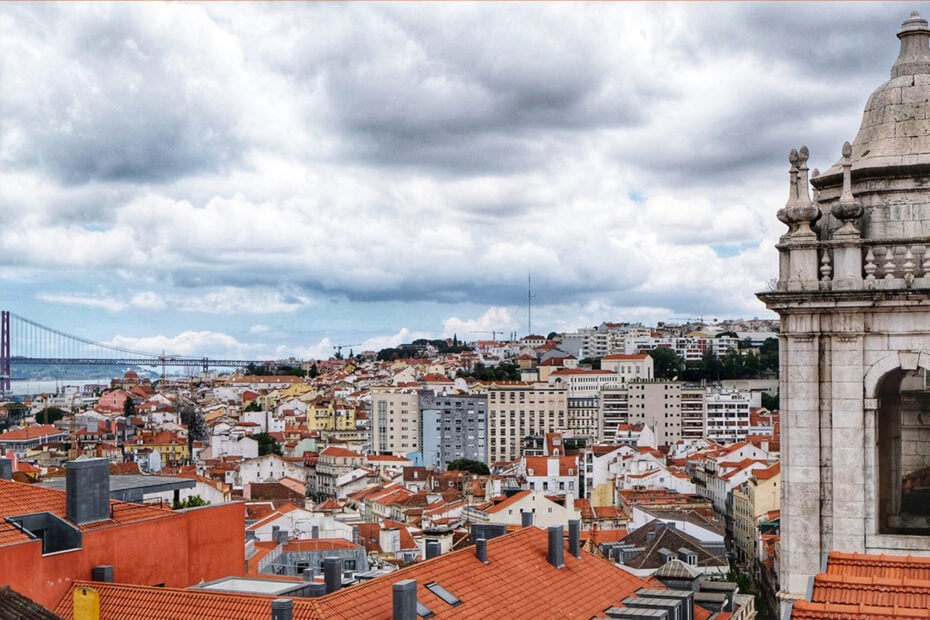
What else can I tell you about Lisbon? Don't steal the pretty tiles, do stop in a church for a free concert, and don't be afraid to get lost. Do learn some Portuguese to make that old lady running the neighbourhood cafe smile. Don't pet the pigeons, and if you see a pig, ask why.